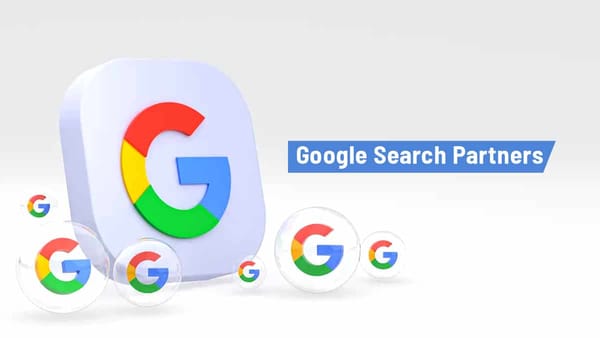How SEO and SEM Work Together: A Comprehensive Guide to Boosting Online Visibility

Introduction
In the world of digital marketing, SEO (Search Engine Optimization) and SEM (Search Engine Marketing) are two essential strategies. While they are often seen as separate approaches, they work even better when combined. Together, they can maximize online visibility, drive traffic, and ensure business growth.
This article explores how SEO and SEM complement each other, the key differences, and practical ways to integrate them for the best results.
What Is SEO?
SEO, or Search Engine Optimization, is a strategy to improve a website’s organic ranking on search engine results pages (SERPs). It involves several techniques, such as:
- Researching and integrating relevant keywords.
- Creating high-quality, user-friendly content.
- Enhancing the technical performance of your site (e.g., faster load times).
- Building backlinks to improve authority and trustworthiness.
SEO focuses on attracting long-term, unpaid traffic to your site.
What Is SEM?
SEM, or Search Engine Marketing, focuses on using paid methods to gain visibility on search engines. This includes:
- Running pay-per-click (PPC) ads, like Google Ads.
- Displaying ads in search results based on user queries.
- Targeting specific audiences using paid search campaigns.
SEM delivers instant visibility and is ideal for businesses looking for quick results.
Key Differences Between SEO and SEM
While both aim to boost search engine visibility, they differ in their approach:
- Cost: SEO relies on organic strategies that require time and effort, while SEM involves paid campaigns.
- Time to Results: SEO takes time to show results, often months, while SEM provides immediate visibility once campaigns are live.
- Longevity: SEO offers long-lasting benefits if done consistently. SEM results stop as soon as the budget runs out.
- Visibility: SEO focuses on organic rankings, while SEM ensures paid visibility at the top of search results.
How SEO and SEM Complement Each Other
When combined, SEO and SEM amplify the effectiveness of your digital marketing efforts. Here’s how they work together:
1. Paid and Organic Traffic
Using both SEO and SEM allows you to capture a wider audience. SEM drives quick traffic through paid ads, while SEO builds steady, organic traffic over time. Together, they create a balanced traffic flow that maximizes your reach.
2. Keyword Insights
SEM campaigns provide real-time data on keyword performance, such as which keywords generate the most clicks or conversions. This data can guide your SEO efforts by highlighting high-value keywords to target in organic content. Similarly, SEO can reveal trending keywords that can be tested in SEM campaigns.
3. Building Brand Authority
SEM ads give your brand immediate visibility, while SEO builds trust through organic rankings. When users see your brand in both paid ads and organic search results, it reinforces your credibility.
4. Optimizing Content
SEM allows you to test different headlines, descriptions, and landing pages through A/B testing. The best-performing versions can then be applied to your SEO strategy to optimize meta titles, descriptions, and on-page content.
5. Retargeting Visitors
SEO brings in visitors who may not convert immediately. SEM retargeting ads can bring them back to your website by displaying personalized ads, increasing the chances of conversion.
Strategies to Integrate SEO and SEM
1. Start with SEM for Quick Wins
If your website is new or has limited visibility, SEM can help drive immediate traffic. Paid campaigns ensure quick exposure while your SEO efforts take time to build.
2. Focus on SEO for Long-Term Growth
While SEM offers quick results, SEO creates a sustainable source of traffic. Regularly updating your website with fresh, high-quality content and optimizing it for search engines ensures consistent growth.
3. Use SEO Insights to Guide SEM Campaigns
Analyze which keywords are performing well organically. Use this data to refine your SEM targeting and ad copy for better results.
4. Measure and Optimize Both Channels
Use analytics tools to track the performance of SEO and SEM efforts. Focus on metrics such as:
- Conversion rates from paid and organic traffic.
- Keyword rankings and performance.
- Bounce rates and user engagement.
By analyzing the data, you can adjust your strategies to improve overall outcomes.
Benefits of Using SEO and SEM Together
When integrated effectively, SEO and SEM offer several benefits:
- Improved ROI: Combining efforts increases the return on investment by maximizing visibility and traffic.
- Greater Reach: Both strategies capture different types of audiences, increasing overall reach.
- Enhanced User Experience: Insights from both channels help refine your website’s design, content, and navigation.
- Competitive Edge: Dominating both organic and paid search results helps you outshine competitors.
Common Challenges and Solutions
- Budget Allocation: SEM requires consistent spending, while SEO needs ongoing effort. Balance your budget by prioritizing SEM initially and gradually shifting more resources to SEO.
- Keyword Overlap: Avoid competing with yourself by ensuring unique keywords are used for each channel.
- Tracking Performance: Use tools like Google Analytics or SEMrush to track the combined impact of SEO and SEM campaigns.
Conclusion
SEO and SEM are not just standalone strategies—they are powerful tools that, when combined, create a robust marketing plan. By leveraging SEM’s immediate impact and SEO’s long-term benefits, businesses can dominate search engine results and stay ahead of the competition.
Start by setting clear goals, aligning your SEO and SEM efforts, and continuously optimizing both channels. The synergy between the two will ensure sustainable growth and increased online visibility.




